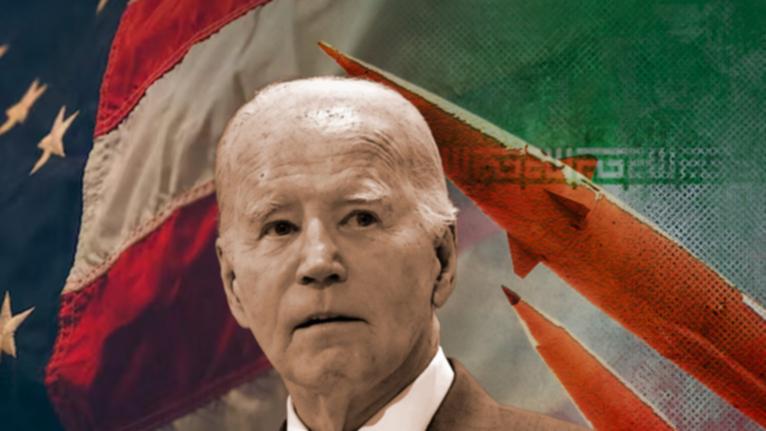The Economist: Violence spirals as Iran’s proxies kill American soldiers

It was a matter of time. Since Hamas’s brutal assault on Israel on October 7th, Iran-backed groups have fired drones and rockets at American outposts across the Middle East on 160 occasions. Almost all have missed or been shot down. On January 28th one got through, killing three American soldiers and injuring 34 others in Jordan. The incident — which is thought to be the first deadly aerial attack on American ground forces since the Korean war — piles pressure on Joe Biden, America’s president, to retaliate forcefully. It is likely to intensify a maelstrom of political violence now stretching from Lebanon to Yemen.
Statements by Mr Biden and the Pentagon’s Central Command (centcom), the military command which oversees the Middle East, said that a one-way attack drone had struck Tower 22, a small outpost at the extreme north-eastern corner of Jordan on the border with Syria. The drone hit living quarters on the base, according to the Washington Post, which cited an American official.
America has used Tower 22 since 2015, originally as a place to train rebels opposed to the government of Bashar al-Assad, Syria’s dictator, and later to aid Kurdish forces fighting the Islamic State group. It is thought to have minimal air defences. The site is an important logistics hub for the Tanf base in Syria, 20km over the border, which houses several thousand American and allied special forces, and has been attacked numerous times since October 7th. Confusingly, Jordan’s government publicly denied that any attack had occurred on its soil, implying that it had taken place at Tanf instead.
Sign up to The Nightly's newsletters.
Get the first look at the digital newspaper, curated daily stories and breaking headlines delivered to your inbox.
By continuing you agree to our Terms and Privacy Policy.Mr Biden said that “radical Iran-backed militant groups operating in Syria and Iraq” were responsible. Iran’s Islamic Revolutionary Guard Corps (irgc) has equipped, trained and supported armed groups in both countries, many of which operate under the umbrella of a so-called Islamic Resistance in Iraq, and some of which have been formally absorbed into Iraq’s armed forces, complicating America’s response. The groups have launched drones and rockets at a series of American bases, most recently, prior to the latest incident, on Asad air base in western Iraq, an attack which caused traumatic brain injury to two American soldiers.
America has retaliated eight times, including with air strikes in Iraq on January 23rd which prompted a strong public rebuke from Iraq’s elected government. A few of those retaliatory strikes have been directed at Iranian targets: on November 8th American jets bombed an irgc weapons depot in eastern Syria and on November 12th it hit an irgc-linked training facility and safe house in the same region.
Separately, and in response to a campaign of missile strikes against shipping in the Red Sea, Mr Biden has launched nine rounds of strikes against the Iran-backed Houthi group which rules much of Yemen. The chaos they have inflicted on the global shipping industry has continued nonetheless. On January 26th a tanker carrying fuel, owned by Trafigura, one of the world’s largest traders of energy, was struck by a missile: the explosion left the vessel on fire off the coast of Aden.
A military response appears inevitable; the only question is how far it will go.
The president has come under growing political pressure, particularly from Republicans, to take stronger steps against Iran. “The Biden Administration’s rhetoric is falling on deaf ears in Iran,” complained Lindsey Graham, a hawkish senator. “Hit Iran now,” he urged. “Hit them hard.” In his public statement, Mr Biden was non-committal. “We will hold all those responsible to account at a time and in a manner of our choosing,” he said. “It’s a nightmare for Biden,” says John Raine, a former British diplomat in the Middle East who has written on Iran’s network of proxies in the region. “The Iranian creeping barrage of asymmetric, vicarious strikes has finally reached him.”
A military response appears inevitable; the only question is how far it will go. Another round of limited strikes against Iran-backed groups in Iraq and Syria will neither placate domestic critics nor do much to deter Iran from further attacks. Mr Biden could choose to strike more prominent or valuable irgc targets in those countries. He could also strike Iran directly, but America has not conducted an overt military operation on Iranian soil since a botched hostage rescue in 1980 and has not hit Iranian forces outside Iraq and Syria since a large-scale strike on irgc naval forces in 1988. America’s response “will be on a level far above [the] action we’ve seen thus far,” noted Gregory Brew, an Iran expert at the Eurasia Group. “This could signal a period of much more intense exchanges, with more damage and higher casualties.”
Mr Biden’s dilemma is that while modest reprisals may appear inadequate, heavy retaliation could cause other problems. Large-scale attacks in Iraq would further poison the relationship with the government in Baghdad, handing Iran a political victory.
Iran could also up the ante elsewhere. Hizbullah, an Iran-backed militant group in Lebanon, has been trading missiles with Israel for months. America fears that Israel might attack or invade, and has urged its ally to avoid a major escalation there; Iran could encourage Hizbullah to stir that pot more forcefully. It could also launch attacks against a wider range of American targets, directly or through proxies, including diplomatic and civilian outposts, rather than just military bases.
Outright conflict with Iran also almost guarantees a surge in the oil price, especially if transit through the Persian Gulf were to be disrupted or Iranian attacks on Saudi Arabian oil infrastructure were to take place. The price of a barrel of Brent crude has risen from $73 in early December to $84 on January 26th. A further sharp rise would feed through into petrol-pump prices in America, during an election year.
Finally, the attack comes as America and its allies are attempting to negotiate a pause in the Israel-Hamas war and a hostage deal, in the hope that it will eventually end the war or at least diminish fighting sufficiently to reduce tensions elsewhere. An eruption of violence between America and Iran could quash hopes of restoring calm before Ramadan, the Muslim holy period which begins in March.
“The US will want to find a response that is proportionate and non-escalatory but also effective and deterrent,” says Mr Raine. “That is, under the current conditions in the region and with the current array of active hostile actors, a very tall order. At least one of those criteria is going to have to give.”
